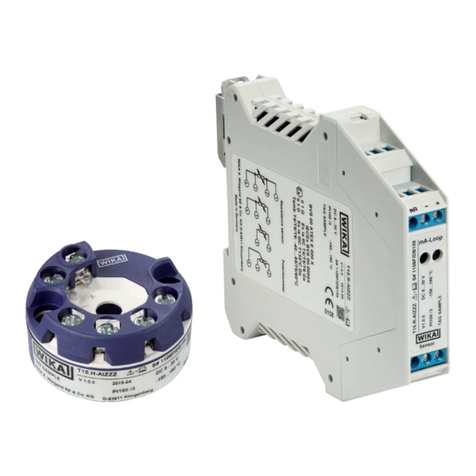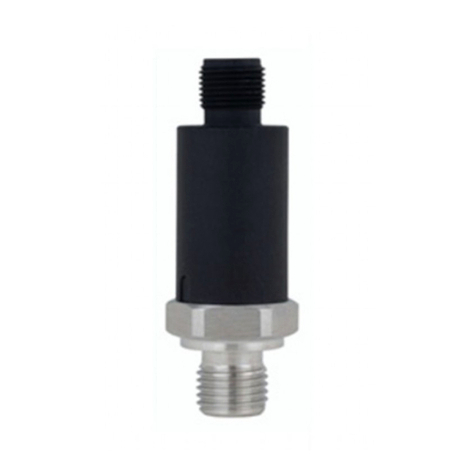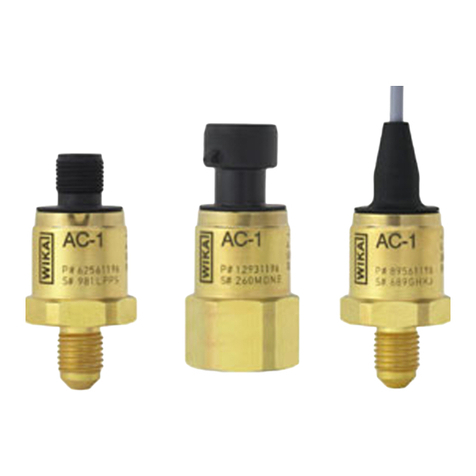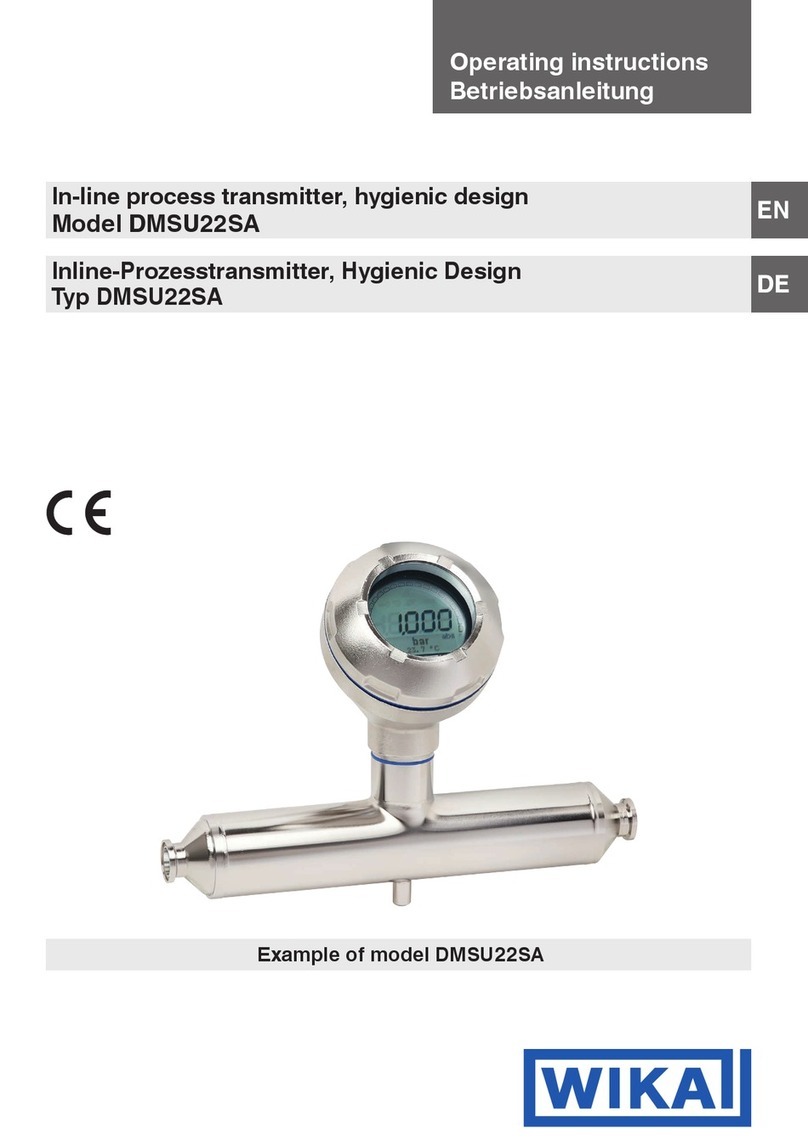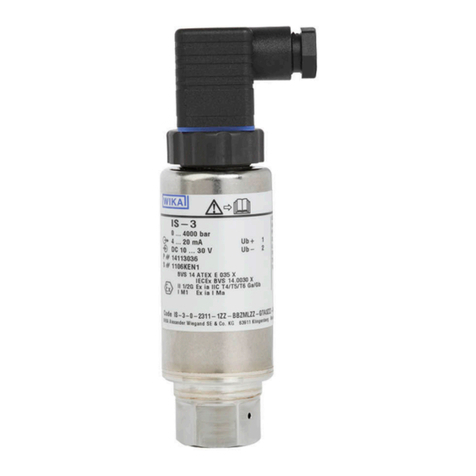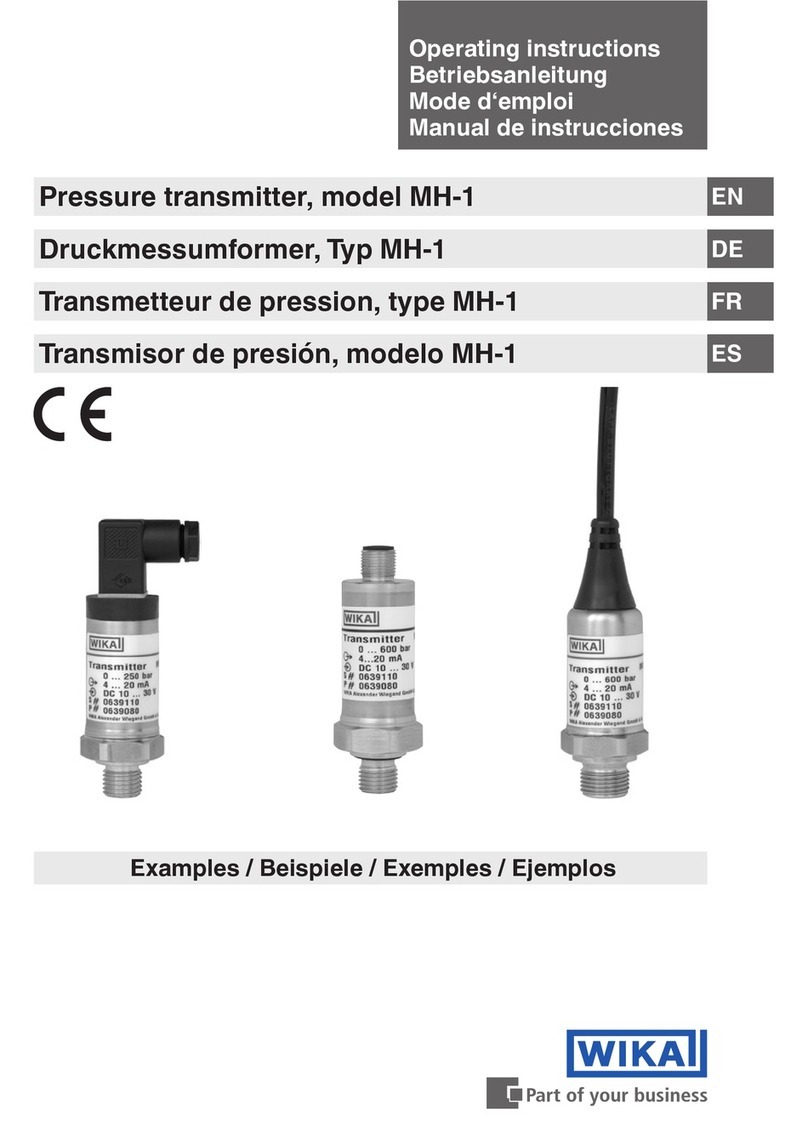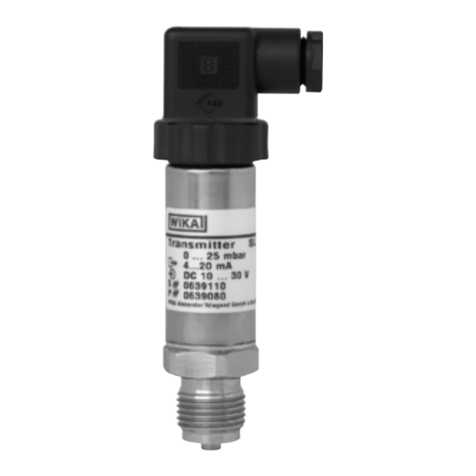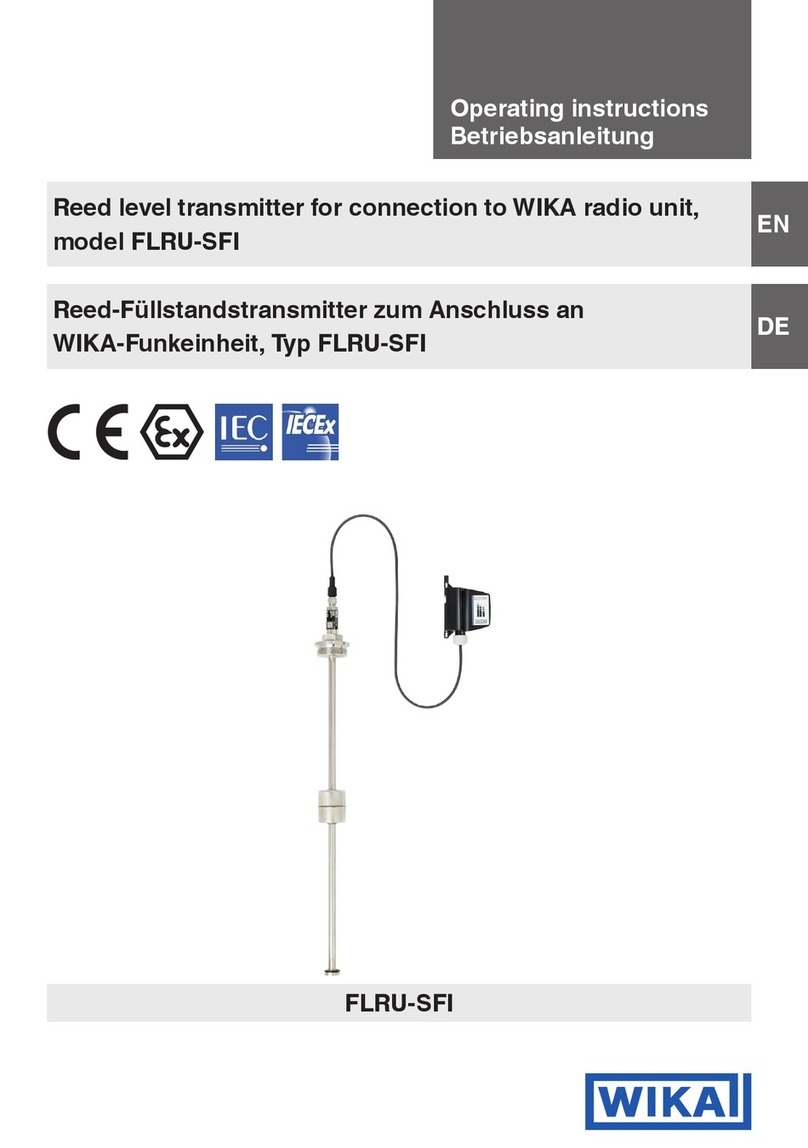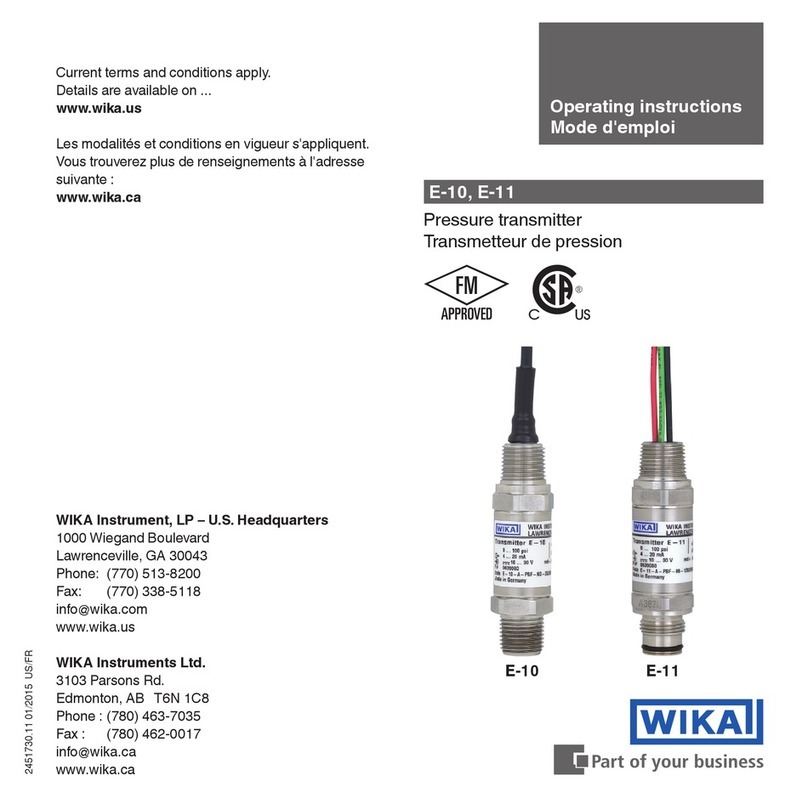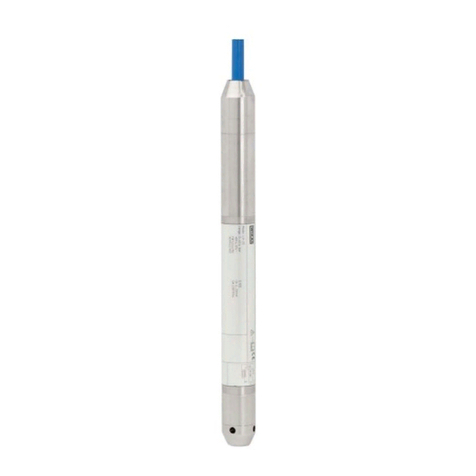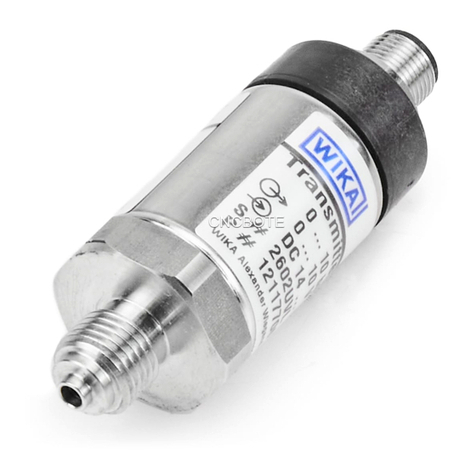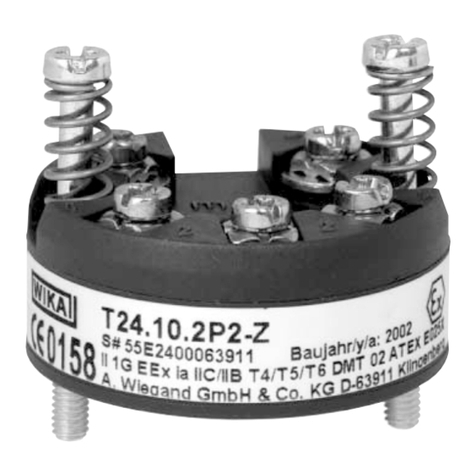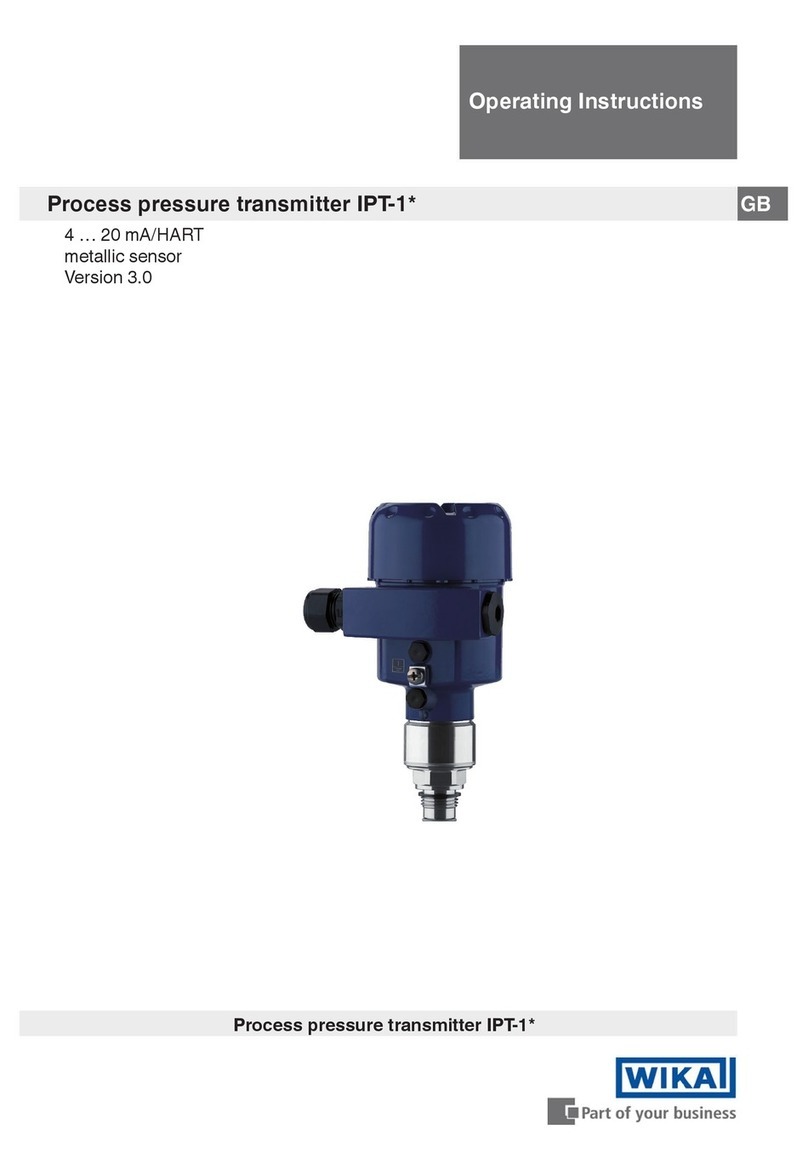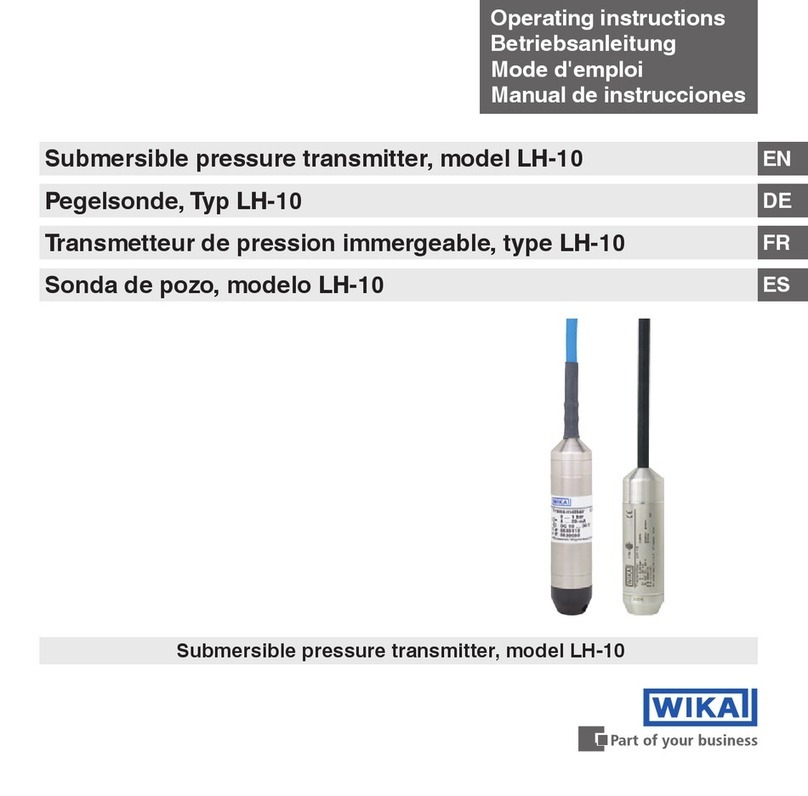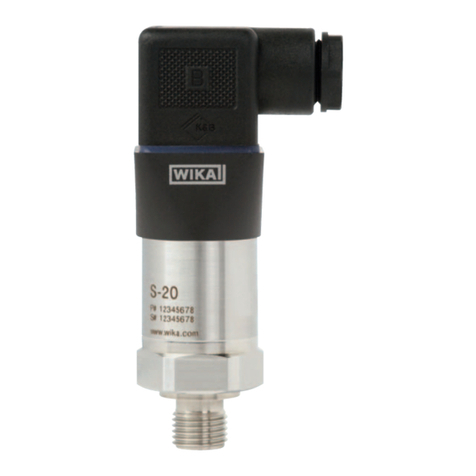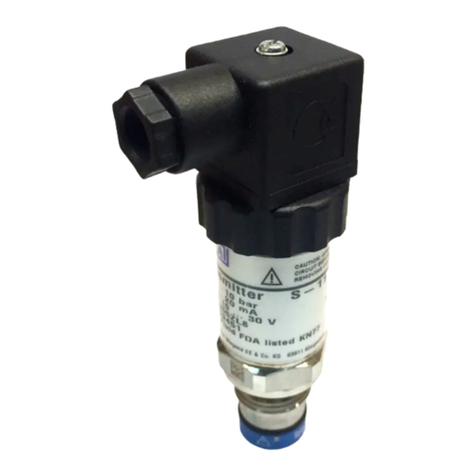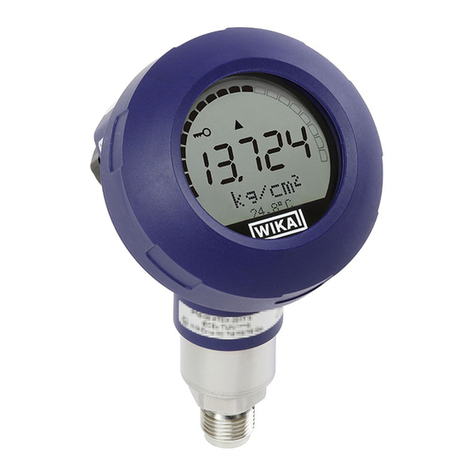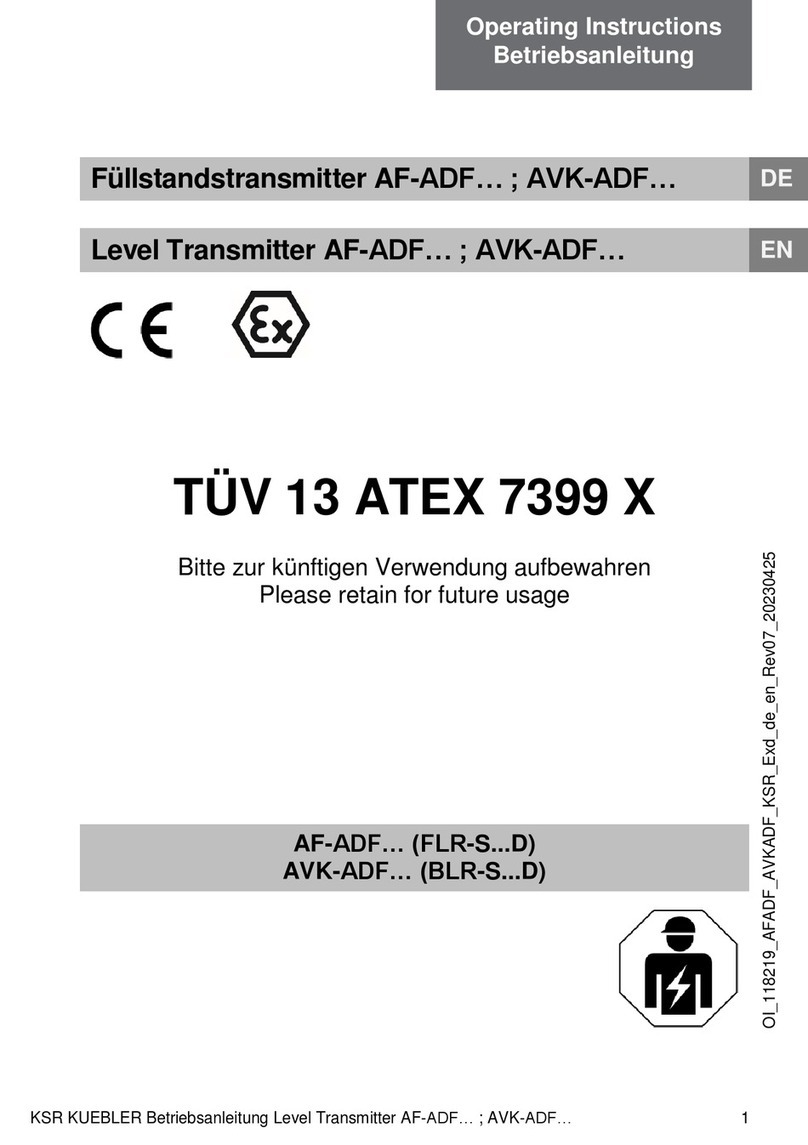2132926.07 GB/D/F/E 03/2010
16 WIKA Operating instructions/Betriebsanleitung/Mode d'emploi/Instrucciones de servicio IS-2X
2132926.07 GB/D/F/E 03/2010
17
WIKA Operating instructions/Betriebsanleitung/Mode d'emploi/Instrucciones de servicio IS-2X
Specifications Model IS-20-S, IS-21-S, IS-20-F, IS-21-F, IS-20-H
Model IS-2X-F, IS-20-H with
field case RA ≤(U+ – 11 V) / 0.02 A
Test circuit signal and maximum
load RA ≤15 (only model IS-2X-F, IS-20-H with field case)
Adjustability zero/span % ± 5 using potentiometers inside the instrument
Response time (10 ... 90 %) ms ≤1 4)
4) Response time IS-20-S/-F: ≤10 ms at medium temp. below < -30 °C for
pressure ranges up to 25 bar.
Response time IS-21: ≤ 10 ms at medium temp. below < -30 °C (-22 °F).
Power Pi W 1 (750 mW with approval for Category 1D)
Insulation voltage Insulation complies with EN 60079-11
Accuracy % of span ≤0.5 6) {0.25} 5) 6)
5) Accuracy { } for pressure ranges ≥0.25 bar, not for IS-20-H
6) Including non-linearity, hysteresis, zero point and full scale error (corresponds to
error of measurement per IEC 61298-2).
Adjusted in vertical mounting position with lower pressure connection.
Non-linearity % of span ≤0.2 (BFSL) according to IEC 61298-2
Non-repeatability % of span ≤0.1
1-year stability % of span ≤0.2 (at reference conditions)
Permissible temperature of
Medium 8) *)-20 ... +80 °C 7) -4 ... +176 °F 7)
(Extended temperature ranges see chapter 7 „Relation of medium
temperature to ambience temperature“) 7)
Ambience 8) -20 ... +80 °C 7) -4 ... +176 °F 7)
Storage -30 ... +105 °C -22 ... +221 °F
7) Other temperature ranges are possible, depending on the electrical connection;
see EC-type examination certificate, e.g. -30 ... +105 °C / -22 ... +221 °F and
table page 83 and 84
Rated temperature range 0 ... +80 °C 32 ... +176 °F
Temperature coefficients within
rated temperature range
Specifications Model IS-20-S, IS-21-S, IS-20-F, IS-21-F, IS-20-H
Mean TC of zero % of span ≤0.2 / 10 K (< 0.4 for pressure range ≤250 mbar)
Mean TC of range % of span ≤0.2 / 10 K
Installation position mbar < 2 at +/- 30° tilted position with model IS-21-S and IS-21-F
CE- conformitiy
Pressure equipment directive 97/23/EC
EMC directive 2004/108/EC, EN 61 326 Emission (Group 1, Class B) and Immunity
(industrial locations)
Directive ATEX of equipment
intended for use in potentially
explosive atmospheres
94/9/EC
Ex-protection ATEX Category 8) 1G, 1/2G, 2G, 1D 9), 1/2D 9), 2D 9), M1, M2
Ignition protection type Ex ia I/II C T4, Ex ia I/II C T5, Ex ia I/II C T6
8) Read the operating conditions and safety-relevant data in the EC-type
examination certificate in any case (BVS 04 ATEX E 068 X)
9) Not for IS-20-H
Ex-protection FM, CSA Class I, II and III
Ignition protection type Instrinsic safe Class I, II, III Division 1,
Group A, B, C, D, E, F, G and Class I, Zone 0 AEx ia II C
Approval German Lloyd GL Environmental Category D, F, EMC 1
RF-immunity V/m 10
Burst kV 2
Shock resistance » Model IS-2X-S g 1000 10) according to IEC 60068-2-27 (mechanical shock)
» Model IS-2X-F g 600 10) according to IEC 60068-2-27 (mechanical shock)
10) not with ship approval
Vibration resistance » IS-2X-S g 20 11) according to IEC 60068-2-6 (vibration under resonance)
» IS-2X-F g 10 11) according to IEC 60068-2-6 (vibration under resonance)
11) with ship approval: Category H, up to 2KHz
Wiring protection
Reverse polarity protection U+ towards U-
7. Starting, operation GB 7. Starting, operation GB







